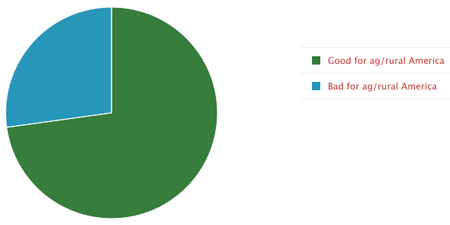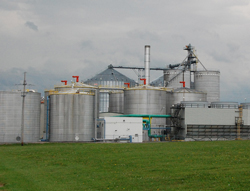Agriculture Secretary Tom Vilsack supports the Renewable Fuels Standard (RFS2), but thinks strategies to build demand are more important to biofuels than tax credits.
 Vilsack made multiple appearances in Hawaii this week, including at the American Farm Bureau Federation (AFBF) annual meeting where he addressed the membership and met with the media and had the opportunity to comment on biofuels policy.
Vilsack made multiple appearances in Hawaii this week, including at the American Farm Bureau Federation (AFBF) annual meeting where he addressed the membership and met with the media and had the opportunity to comment on biofuels policy.
During a press conference at AFBF on Monday, Vilsack said he believes it is important to keep the RFS2 in place for multiple reasons. “One, it provides consumer choice. We know that because we have a healthy biofuels industry that consumers are paying 90 cents to a dollar less for gas,” he said. “It’s a job creator in rural America and an opportunity to increase the bottom line for farmers, ranchers and producers. And it has helped us reduce our reliance on foreign oil, going from 60% imports to 52% in the last couple of years.” Audio from Vilsack on RFS2
A day later at the Pearl Harbor memorial to tout the increasing use of biodiesel by the military, Vilsack was asked about the expiration of the biodiesel tax credit at the end of 2011 and whether it will hurt the industry again as it did in 2010 if Congress fails to renew it. “First and foremost, our approach is to figure out ways to build demand for the product,” Vilsack responded, noting that they can use loan programs to produce more biodiesel while the commitment by the Navy to increase use of biofuel will help increase demand. “So, I don’t think that we need to rely solely on tax credits.” Audio from Vilsack on Biodiesel Tax Credit



 That loan,
That loan, 
 “In a very difficult financial and policy environment, the first wave of commercial advanced ethanol production facilities are under construction in a number of states across the country,”
“In a very difficult financial and policy environment, the first wave of commercial advanced ethanol production facilities are under construction in a number of states across the country,”  With the Pearl Harbor memorial as a backdrop and a
With the Pearl Harbor memorial as a backdrop and a  “The military in the way they are approaching the future as it relates to energy is reminding us that this country has the capacity not just to think big but also to act big,” said Vilsack. “They understand and appreciate that energy security is important for the future of this country and are dedicated to making sure that the Navy provide a good example to the country on how to go about doing this.”
“The military in the way they are approaching the future as it relates to energy is reminding us that this country has the capacity not just to think big but also to act big,” said Vilsack. “They understand and appreciate that energy security is important for the future of this country and are dedicated to making sure that the Navy provide a good example to the country on how to go about doing this.”



 Agriculture Secretary Tom Vilsack is in Hawaii this week to address the annual meeting of the
Agriculture Secretary Tom Vilsack is in Hawaii this week to address the annual meeting of the  “Registration is required and can be done on-line at
“Registration is required and can be done on-line at  Ethanol plants continued to crank up production right through the end of 2011, setting yet another record for the last week of the year after already setting new records for the two weeks prior.
Ethanol plants continued to crank up production right through the end of 2011, setting yet another record for the last week of the year after already setting new records for the two weeks prior.